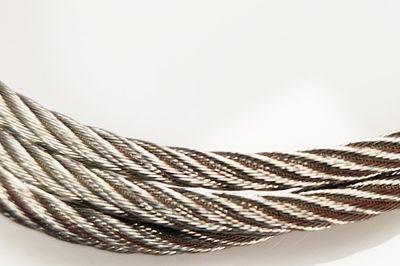Stainless wire, an essential component in a multitude of industries, pvc coated stainless wire rope exemplifies the remarkable combination of strength, durability, and corrosion resistance. This versatile material has revolutionized various sectors, from construction and manufacturing to medical and food processing, owing to its unique properties and diverse applications.
Composition and Properties
Stainless wire is crafted from stainless steel, an alloy primarily composed of iron, chromium, and nickel. The addition of chromium, typically ranging from 10.5% to 30%, imparts stainless steel with its signature corrosion resistance. Nickel enhances this property and also contributes to the material’s mechanical properties, such as toughness and ductility.
The alloy’s corrosion resistance is particularly noteworthy. When exposed to oxygen, a thin, invisible layer of chromium oxide forms on the surface of stainless steel. This passive layer protects the underlying metal from corrosion and self-heals if damaged, making stainless wire an ideal choice for environments where rust and corrosion are significant concerns.
Applications in Various Industries
- Construction and Architecture In the construction industry, stainless wire is used extensively in the creation of safety barriers, balustrades, and architectural mesh. Its strength and aesthetic appeal make it a popular choice for both structural and decorative applications. Additionally, stainless wire’s resistance to corrosion ensures longevity, reducing maintenance costs over time.
- Manufacturing and Engineering Stainless wire finds numerous applications in manufacturing and engineering. It is used in the production of springs, fasteners, and welding electrodes. Its high tensile strength and ability to withstand extreme temperatures make it suitable for demanding environments, such as aerospace and automotive industries.
- Medical Field The medical sector relies on stainless wire for various applications, including surgical instruments, orthodontic braces, and medical implants. Its biocompatibility, resistance to sterilization processes, and non-reactivity with bodily fluids ensure patient safety and product longevity.
- Food and Beverage Industry In the food and beverage industry, stainless wire is indispensable for equipment and machinery that come into direct contact with food products. Its resistance to corrosion and ease of cleaning make it a hygienic choice for food processing, packaging, and storage.
- Marine and Offshore Applications Marine environments are notoriously harsh, with high levels of salt and moisture that can accelerate corrosion. Stainless wire’s corrosion resistance makes it ideal for marine applications, such as rigging, mooring lines, and fishing nets, ensuring durability and reliability even in the toughest conditions.
Advantages and Considerations
Stainless wire offers several advantages, including:
- Durability: Its resistance to wear and tear extends the lifespan of products.
- Low Maintenance: Minimal maintenance is required, reducing long-term costs.
- Aesthetic Appeal: The sleek, modern look of stainless steel enhances the visual appeal of structures and products.
- Recyclability: Stainless steel is 100% recyclable, contributing to environmental sustainability.
However, there are also considerations to keep in mind:
- Cost: Stainless wire can be more expensive than other materials, although its longevity and low maintenance can offset the initial investment.
- Workability: While stainless wire is durable, it can be more challenging to work with compared to other metals, requiring specialized tools and techniques.
Conclusion
Stainless wire stands out as a versatile and indispensable material across numerous industries. Its unique combination of strength, durability, and corrosion resistance makes it an ideal choice for a wide range of applications. As technology and manufacturing processes continue to advance, the potential uses for stainless wire are likely to expand, further cementing its role as a cornerstone material in modern industry.


